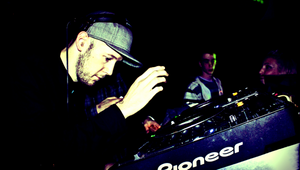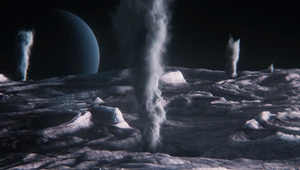
Sound Design on a Microscopic Scale: A Rough Guide from Charlie Cooper

A lot of people think that sound design is simply adding recorded sounds to a scene. Let’s say I’m leaving the studio - what sounds would I hear? A club tune playing from the open record shop opposite, pub drinkers chatting and laughing, maybe even some drilling and hammering from nearby builders. While adding these sounds is of course part of my role as sound engineer, sound design can be much more complex. It’s using techniques, honed over many years, to create detailed soundscapes based on a brief. In some instances, the sound designer’s task can be pretty straightforward (though that’s always brief-dependent!), but what about designing a soundscape for scenes or elements that typically have little or no sound at all? I recently worked on a promo for BBC’s The Green Planet, where the viewer is invited to witness life on a microscopic scale, getting up close and personal with algae, seeds, and monstrous plants. The brief was simply: “Bring it all to life.” Having worked with the BBC before, I knew what this meant but it still presented a conceptual challenge. The promo is full of hyper close-ups and time-lapsed movement. To give it sound, I started thinking of the kind of audio parallels the viewer would expect, maybe the sound of a thousand bugs scattering could work for a shot of microbial activity. My task was to dislocate the viewer from their living room through sound and immerse them in a completely different, unfamiliar world. The nature documentary genre isn’t itself new, yet the scale at which David Attenborough’s programmes operate definitely is. With the evolution of camera technology, the range of what can be captured has evolved too. In The Green Planet a camera burrows underground to shoot elements of nature unseen in this way before, travelling through mud and past debris. In tandem with this, viewers have come to expect a sensory spectacle in every shot, with sound playing an essential role. The task of immersing the viewer in the world of plants is distinct from simply using music, which would create a sense of detached looking. To immerse viewers, the subjects on screen - typically soundless - needed more than sounds, they needed personality, character. For a large, spiky plant I used weightier sounds with metallic layers, like stabbing swords, to convey its existence. The overall effect is menacing, the plant is aggressive to its surroundings. Another shot features the world’s largest flower, often called the Corpse Flower thanks to its stench and grotesque appearance. I matched the sound with the flower’s size and added wet and waxy audio textures to complement its slightly moist, leathery look. The role of the sound designer is to look at a brief, a scene, a radio script, and find a practical solution using only sounds. A lot of the sounds we think of as known and familiar to the ear are the products of creative ingenuity thought up by sound designers. Recently, I sampled and processed an air-con generator to create a controllable small flying drone, and to get the sense of a slimy blocked sink, I included gargling honey! We see a similar conceptual challenge presented to Richard King, sound designer on Inception, with the classic scene where an entire area of Paris lifts off the ground and curls overhead. I like this example because we obviously know the sound of a busy city, but we’ve never seen, or heard, it bend over on itself before. Richard talks about how the sound design could be interpreted in a number of ways that the audience would deem audibly plausible. His brief was to create the impression of a massive watch mechanism, intentionally encouraging the idea of viewers witnessing a malleable giant cog in the fabricated dream-world, which it is. When done right, the job of the sound designer goes unnoticed. It immerses the viewer or listener in the moment - stirring emotions, memories - enhancing the experience. At heart, sound design is about guiding and constructing narratives, giving voice, sound, and ultimately life, to things that maybe didn’t have them before. 















